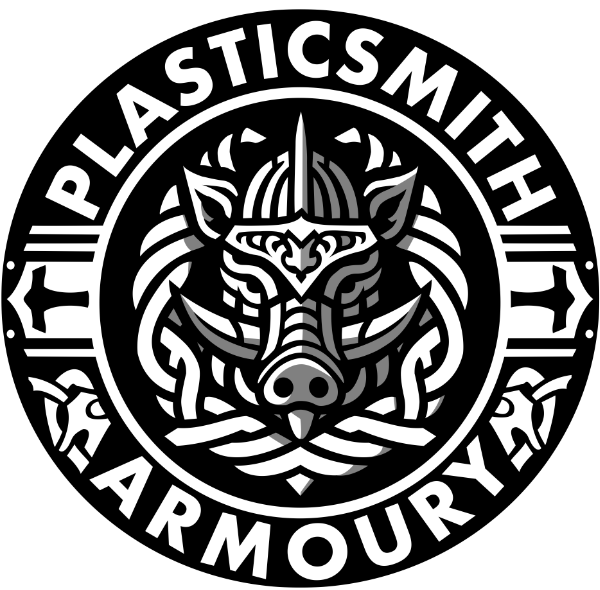Plastic Armour Care and Use
Plastic armour is protective and durable. Given proper care, it will last for decades. Here’s how to do that:
-
Store any straps done up
Plastic armour that has not been vacuumed formed (i.e. vambraces, cuisses, greaves, and any other piece with just a simple, one way curve) tends to “open up” over time. Storing it with the straps done up helps prevents this. Any armour that has a complex, rounded curve (i.e. cops, bazubands, basket hilts, etc) does not suffer from the same issue and thus does not apply here. -
Be cautious of heat
This plastic can get quite hot without issue. However, if you store it in a hot vehicle, crammed in an armour bag with 3 other armour bags on top, it may warp. To prevent that, avoid storing it under stress, or in hot areas. Again, storing it with the straps done up will help prevent warping. This is not an issue for thicker vacuum-formed plastic, and is more of a precaution for thinner, heat-and-bent plastic (vambraces, cuisse, etc). -
Be cautious of cold
I live in a place where it gets to forty degrees below in the winter. If my armour travels to an event in a truck box in the dead of winter, it will be frozen when I take it out. Plastic can get brittle under extreme cold, so give it a bit of time before fighting in it. Normally, if I unpack my gear when I start to armour up, and do a bit of a warm up before fighting, this is plenty of time to let the armour thaw. -
Be cautious of cuts
This armour, while incredibly durable to impact combat, can snap if deeply scored and put under stress. So be cautious of trimming straps or strings; a score mark on the plastic with a knife, especially one that leads to an edge, represents a weakness. Normal nicks and scrapes incurred during the course of combat does not represent the same danger, and deeper cuts can be “healed” by heating the area with a propane torch or heat gun. If you do this, do it in small passes until the plastic begins to soften; do not let the plastic smoke. Contact me for more detail on this. -
Don’t cut holes into nylon webbing
If any of your armour uses nylon webbing for strapping, you’ll notice that it has no holes in it as leather straps do. This is by design. Nylon webbing is woven, such that you can easily work the pin of the buckle through the weave. This helps to preserve the weave so it’ll last for years and years. A natural hole will form over time into the webbing, making it easier to use. If you absolutely must put holes in the webbing, do not use a hole punch. You can use a soldering iron or heated awl to burn holes into webbing. Again, working the pin through the weave really is the best way to go. -
Don't hard-mount your basket hilt
The brackets I use on my basket hilts have holes in them. You may be tempted to use them to mount your hilt to your rattan with screws. That's a bad idea, and can lead to bracket breakage. I wrote a blog post about this, but basically, you want a little bit of flex in your mount. The best way I have found to achieve this is to tape my hilts on. If you don't know how to do that, check the blog post.
If you have any questions, please don’t hesitate to reach out. Enjoy!
